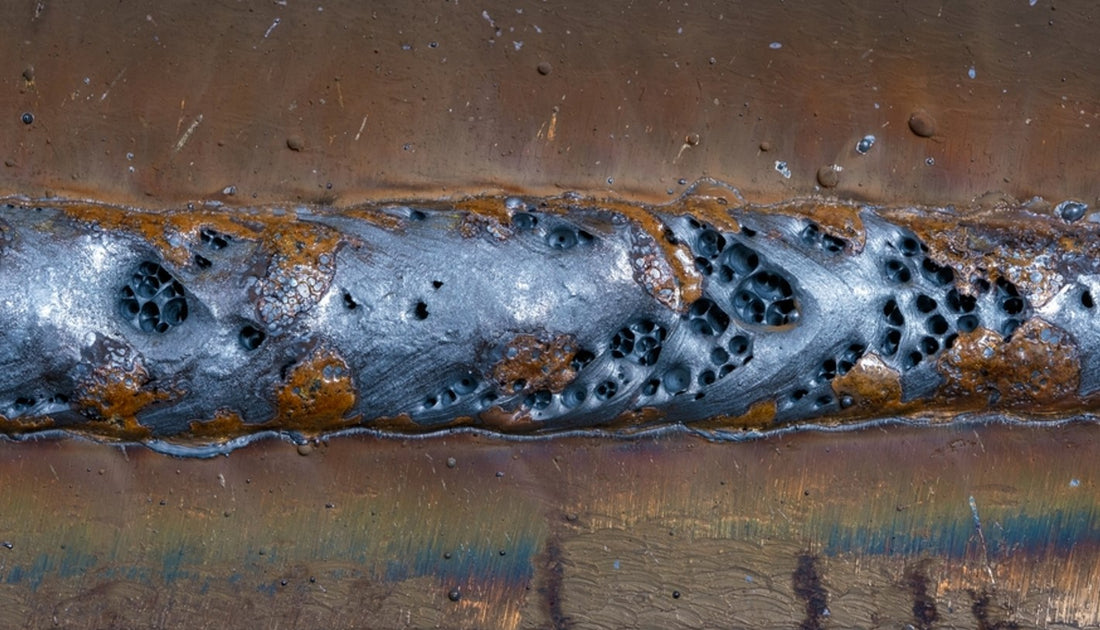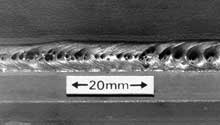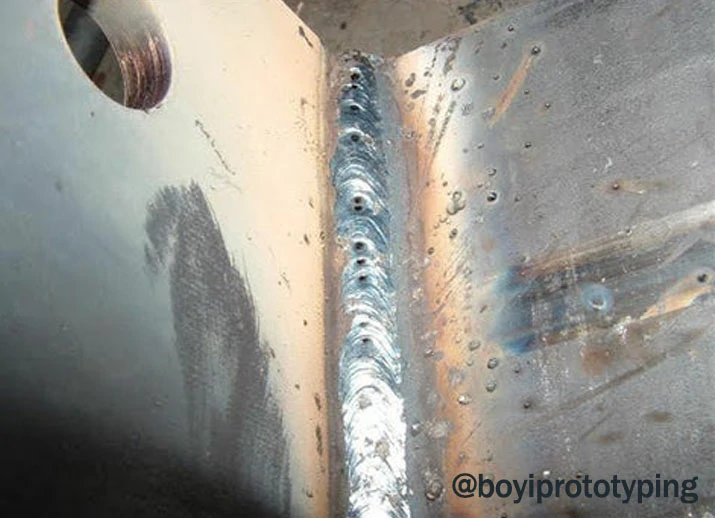Comprehensive Guide: What is Porosity in Welding and Exactly How to avoid It
Comprehensive Guide: What is Porosity in Welding and Exactly How to avoid It
Blog Article
Comprehending Porosity in Welding: Checking Out Causes, Impacts, and Avoidance Methods
Porosity in welding is a consistent difficulty that can substantially affect the top quality and integrity of welds. As specialists in the welding market are well conscious, recognizing the reasons, effects, and avoidance methods connected to porosity is crucial for attaining durable and reputable welds. By diving right into the source of porosity, examining its destructive impacts on weld high quality, and discovering efficient avoidance methods, welders can boost their understanding and skills to create top notch welds regularly. The detailed interaction of variables contributing to porosity needs a detailed understanding and an aggressive method to ensure effective welding results.
Common Reasons For Porosity
Contamination, in the type of dust, oil, or corrosion on the welding surface area, creates gas pockets when heated up, leading to porosity in the weld. Improper securing happens when the securing gas, commonly used in processes like MIG and TIG welding, is not able to completely shield the molten weld swimming pool from responding with the bordering air, resulting in gas entrapment and subsequent porosity. In addition, inadequate gas coverage, typically due to inaccurate circulation rates or nozzle positioning, can leave parts of the weld unguarded, enabling porosity to create.
Effects on Weld High Quality
The existence of porosity in a weld can considerably jeopardize the general top quality and honesty of the bonded joint. Porosity within a weld produces voids or cavities that compromise the structure, making it more prone to fracturing, rust, and mechanical failure.
Moreover, porosity can hinder the performance of non-destructive testing (NDT) techniques, making it challenging to discover various other issues or stoppages within the weld. This can bring about substantial security problems, particularly in critical applications where the architectural honesty of the welded parts is critical.

Avoidance Techniques Summary
Offered the harmful effect of porosity on weld quality, effective avoidance strategies are vital to preserving the structural integrity of bonded joints. One of the key prevention methods is detailed cleansing of the base materials before welding. Pollutants such as oil, grease, corrosion, and moisture can add to porosity, so making sure a clean job surface area is crucial. Appropriate storage of welding consumables in dry problems is likewise important to avoid moisture absorption, which can cause gas entrapment during welding. Furthermore, choosing the suitable welding specifications, such as voltage, current, and travel speed, can help minimize the risk of porosity development. Making sure adequate securing gas flow and protection is another essential prevention technique, as not enough gas protection can lead to climatic contamination and porosity. Finally, appropriate welder training and qualification are crucial visit their website for executing preventative measures successfully and constantly. By integrating these avoidance methods into welding techniques, the event of porosity can be considerably reduced, bring about more powerful and a lot more trusted welded joints.
Relevance of Proper Shielding
Proper securing in welding plays a critical duty in stopping atmospheric contamination and ensuring the honesty of welded joints. Protecting gases, such as argon, helium, or a combination of both, are commonly made use of to shield the weld pool from responding with components in the air like oxygen and nitrogen. When these responsive aspects enter into call with the hot weld pool, they can cause porosity, leading to weak welds with decreased mechanical properties.

Poor securing can lead to different problems like porosity, spatter, and oxidation, compromising the structural stability of the bonded joint. For that reason, sticking to appropriate protecting methods is important to generate top notch welds with marginal flaws and make sure the durability and reliability of the welded parts (What is Porosity).
Monitoring and Control Approaches
Exactly how can welders efficiently monitor and manage the welding process to make sure ideal outcomes and prevent defects like porosity? By continuously checking these variables, welders can recognize variances from the excellent conditions and make prompt adjustments to prevent porosity formation.

Furthermore, implementing correct training programs for welders is essential for keeping an eye on and controlling the look at this site welding process successfully. What is Porosity. Educating welders on the significance of keeping regular criteria, such as correct gas shielding and travel rate, can aid avoid porosity problems. Regular evaluations and certifications can additionally make sure that welders are efficient in monitoring and regulating welding processes
Additionally, the usage of automated welding systems can improve monitoring and control abilities. These systems can precisely control welding criteria, reducing the chance of human mistake and making certain regular weld quality. By integrating sophisticated tracking innovations, training programs, and automated systems, welders can successfully keep an eye on and control the welding process to reduce porosity problems and accomplish high-grade welds.
Conclusion

Report this page